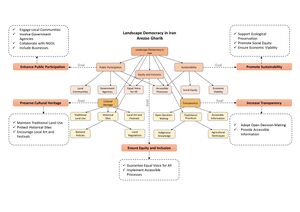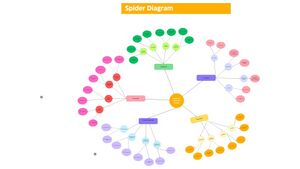Democratic Landscape Transformation 2024 - Team 6
>>> Back to working group overview
>>> Back to seminar reading list
>>> go to the Editing Help
Background of your team
Please present your team briefly. Which linguistic and cultural perspectives does each member bring in? Which disciplinary backgrounds are present in your team?
- Team member 1 - Nicola Massarini - Hello everyone, I'm Nicola, a 23-year-old student from Italy, currently pursuing a master’s degree in Civil Engineering and Architecture at the University of Bologna. I am a native Italian speaker with basic knowledge of English, which I am actively working to improve. Coming from Sassuolo, a small city in the province of Modena, my cultural perspective is shaped by an environment dominated by industrial production. This setting underscores the need for a balanced approach that prioritizes not only industrial and economic goals but also the cultural, social, and environmental interests of the community. My background instills in me a commitment to advocating for designs and solutions that reflect these broader societal values. As a fifth-year student in Civil Engineering and Architecture, I contribute a solid grounding in both technical engineering principles and architectural design. This education equips me with a blend of practical and theoretical knowledge, enabling me to approach construction and design challenges from an integrated perspective. The dual focus also equips me to tackle challenges that require both engineering precision and creative design, ensuring that our work not only meet functional requirements but also enhance the quality of life for the communities they serve. I am excited to contribute to our team and collective goals for a more democratic landscape!
- team member 2 - Alice Dourountaki - Hi! I am an Agronomist (Agricultural University of Athens) specialized in Agricultural Economics and I am currently enrolled in the last semester of Landscape Architecture Master's Degree from the same University. My goal is to create spaces considering every aspect (social, environmental etc), especially the equal inclusion of all social groups in public spaces, the therapeutic/sensory abilities of certain plants and biodiversity, all designed in accordance to climate change limitations.
- team member 3 - Szőnyi Fanni Anna - Hi! I am Fanni, a 20 years old Horticultural Engineering student from Hungary. I am in my first bachelor year in MATE University, in Budeapest. Since my field of expertise is horticulture, I think connectig the two fields would involve integrating the principles and practices of horticulture with the design and management of public spaces in a way that promotes inclusivity, accessibility, and community engagement. I am really interested in enhancing environmental sustainability, that can meet with democratic landscape in case of utilizing horticultural principles to create public spaces that are both ecologically sustainable and socially inclusive. I would satrt this journey with impementing sustainable plant practices, such as using native and drought-tolerant plants in landscapes. With incorporating renewable resources and reduceing reliance on non-renewable inputs would contribute to environmental stability just to mention some examples. I beleive that if we start merging horticulture with democratic landscape design, we can create public spaces that not only enhance environmental stability but also engage and benefit the community. This integration leads to healthier ecosystems, more resilient urban environments, and a greater connection between people and their local environment.
- team member 4 - Eva Huber. Hello, My name is Eva and I am a masters student studying Landscape Architecture in Freising, Germany. I originally come from the US but was inspired to study here to develop an international perspective on landscape design. My bachelors was in Urban Planning from San Diego State University, this is where I was first introduced to the idea of a democratic landscape. To me this means a place that is maintained for community, ecological and cultural well being. A strong democratic landscape takes into account the perspective’s and needs of all users. I am interested in how to design and create space that does just that through landscape architecture. I believe that for a landscape to be democratic it must take into account all of the systems involved and work towards equitable solutions for those at play.
- team member 5 - Arezoo Gharib.Hello! My name is Arezoo Gharib, and I am studying Landscape Architecture at Weihenstephan University in Freising, Germany. I am originally from Iran, where we speak Persian. My background is in Architecture, and I have extensive experience in this field. However, I am particularly drawn to Landscape Architecture because it emphasizes the importance of the natural environment. In architecture,the best projects often grow out of a deep consideration for the landscape, and people play a crucial role in this process. I am passionate about Landscape Architecture because it involves creating spaces that enhance the well-being of individuals and communities. Here at Weihenstephan University, I have come to understand that public participation is a key factor in achieving landscape democracy. This means that involving people in the planning and design process is essential to creating spaces that truly meet their needs and desires. I am excited to continue my studies and contribute to projects that prioritize both the environment and the communities that inhabit it.
Your Landscape Democracy Manifestoes
Here you can add links to the manifestoes you have presented on April 24. Please make sure that the links are accessible. You can also add them directly here on the wiki, they need to be png or jpg format then.
- Manifesto 1 - Nicola Massarini - https://drive.google.com/file/d/1MIfUtJcDvW1koL3lfdc0KOaT1de8Od36/view?usp=drive_link
- manifesto 2 - Alice Dourountaki - https://docs.google.com/presentation/d/1fcX_fgnVF0IoGQr3vQQ5IA4QCwOeWJqx/edit?usp=sharing&ouid=108062989720491329711&rtpof=true&sd=true
- Manifesto 3 - Szőnyi Fanni - Manifesto
- Manifesto 4 - Eva Huber https://storymaps.arcgis.com/stories/9c2c041107454174a2c0354e93693c87
- Manifesto 5 - Arezoo Gharib - https://drive.google.com/file/d/1OzAtYZwyADXmZs3W9BUY_lokiOZtpgFW/view?usp=drive_link
Readings, concepts and definitions
- Start: April 3, 2024
- Due: July 2, 2024
While working in your group, please start to express your personal understanding of the relation of landscape and democracy in the form of a concept map with linking words or any other diagrammatic representation. Please make your maps very visual and not just verbal. Think critically about why one map differs from another.
The final product is a shared concept map that integrates the various understandings present within your team.
About concept mapping
Before starting the exercise you can read this article by Joseph D. Novak & Alberto J. Cañas about Theory Underlying Concept Maps and How to Construct and Use Them. This paper gives a good explanation of how concept maps are conceived and developed.
You can use any tool you like for producing your concept map. However, since the result needs to be submitted digitally we recommend the following open source software for producing your maps:
- Cmap Tools >>> you can also work with your group on the Cmap cloud doing a shared map
- VUE - The Visual Understanding Environment
- Use a shared whiteboard to develop your integrated concept map, such as MIRO or MURAL
How to present your concept maps
- Possible format: JPG (for wiki upload) or link to any other resource
- We give you below a draft image gallery where you can add pictures of your map (in JPG or PNG format)
- You can present your integrated understanding as one concept map or your present individual ones and the integrated one.
- add as many additional materials as you need
Overview of your concept maps (individiual and integrated)
References for the Integrated Map:
1. OLA Charta Layout one column Vs 20240619.pdf:
o Definition of Landscape Democracy and core values: inclusivity, participation, empathy, sustainability, resilience.
o Importance of community participation and Living Labs as tools for democratic landscape transformation.
o Emphasis on collective rights and responsibilities in landscape management.
2. #1_Right_to_Landscape_Intro.pdf:
o Concepts of the right to landscape and collective responsibility (see pp. 5-7).
3. 978-92-871-8486-3 B-ELC Landscape Democracy.pdf:
o Guidelines for public participation and social inclusion in landscape projects (see pp. 10-12).
4. DLD_book_part1.pdf:
o Principles of social justice and environmental sustainability in landscape design (see pp. 15-17).
5. KUeHNE_LandscapeCulture-CulturingLand.pdf:
o Role of landscape culture in promoting identity and connection to the territory (see pp. 20-22).
Please finish with a short reflection
- What are the similarities and differences in your team regarding your understanding of what democratic landscape transformation is?
Similarities:
- Core Principles: Inclusivity, participation, sustainability.
- Collaborative Approach: Stakeholder collaboration, co-production.
- Social Justice: Addressing inequalities, equitable green space access.
- Education: Importance of public and stakeholder education.
Differences:
- Contextual Focus: Urban vs. rural priorities.
- Goal Priorities: Sustainability vs. social justice emphasis.
- Objectives and Interventions: Detailed design vs. participatory processes.
- Detail Level: Granular vs. broad goals.
- Innovative Practices: High-tech vs. traditional methods.
Conclusion: Shared principles and values are evident, but individual maps reflect diverse contexts and priorities, enriching the team’s overall understanding.
- In how far did the seminar lectures and readings help you to clarify this?
Clarification Provided:
- Core Concepts: Unified understanding of inclusivity, participation, sustainability, and social justice.
- Collaborative Approaches: Emphasis on stakeholder collaboration and co-production.
- Contextual Applications: Insights into urban vs. rural challenges and solutions.
- Innovative Practices: Introduction to tools and technologies for landscape transformation.
- Social Justice: Integration of social justice in landscape design.
- Educational Impact: Enhanced understanding through discussions, examples, and case studies.
Conclusion: Seminar lectures and readings significantly clarified democratic landscape transformation by providing comprehensive insights into principles, collaboration, context, innovation, and social justice.
- What will you take home from this seminar?
Key Takeaways from the Seminar:
- Core Principles: Understanding inclusivity, participation, and sustainability as vital elements of democratic landscape transformation.
- Collaborative Insights: The importance of co-production and stakeholder collaboration in successful projects.
- Practical Applications: Real-world examples and strategies for urban and rural landscape challenges.
- Innovative Approaches: Exposure to cutting-edge tools and methodologies for future projects.
- Commitment to Social Justice: Reinforced commitment to integrating social justice into landscape design.
- Educational Enrichment: Enhanced knowledge through engaging lectures, readings, and discussions.
Conclusion: This seminar has instilled a deep appreciation for the complexity and beauty of democratic landscape transformation. The knowledge, collaborative spirit, and inspiration gained will drive us to create landscapes that are sustainable, inclusive, and enriching for all. We are excited and motivated to apply these insights, knowing our collective efforts can make a meaningful impact.





